Below is a grid of the various modalities I use during my massages. No one session is the same, as I like to employ specific techniques that best fit the clients needs during the session. Click “Read More” below any of the massage styles to understand more about each technique.
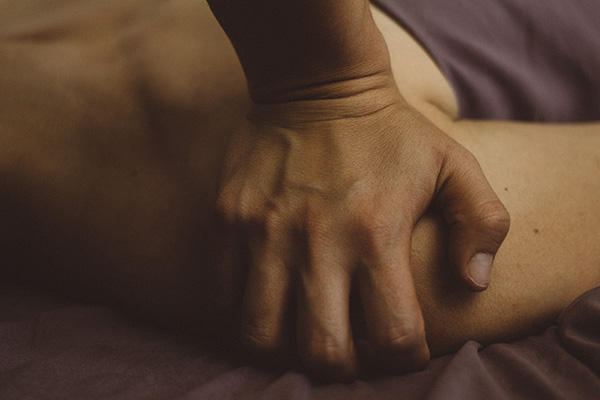
Deep Tissue Massage
Targets chronic patterns of holding with slow deep strokes and targeted pressure most often with a finger, thumb or elbow.
Deep Tissue Massage is a massage technique that focuses on the deeper layers of muscle tissue. It aims to release the chronic patterns of tension in the body through slow strokes and deep finger pressure on the contracted areas, either following or going across the fiber’s of the muscles, tendons and fascia.Deep tissue massage is used to release chronic muscle tension through slower strokes and more direct deep pressure or friction applied across the grain of the muscles not with the grain. Deep tissue massage helps to break up and eliminate scar tissue. Deep tissue massage usually focuses on more specific areas and may cause some soreness during or right after the massage. However, if the massage is done correctly you should feel better than ever within a day or two.
Why get a Deep Tissue Massage?
It feels good and it is beneficial to your health. When muscles are stressed, they block oxygen and nutrients, leading to inflammation that builds up toxins in the muscle tissue. A deep-tissue massage helps loosen muscle tissues, release toxins from muscles and get blood and oxygen circulating properly. Because many toxins are released, it’s important to drink plenty of water after a deep-tissue session to help eliminate these toxins from the body.
What is the purpose of Deep Tissue Massage?
The purpose is to “unstick” the fibers of a muscle while releasing deeply-held patterns of tension, removing toxins, while relaxing and soothing the muscle. It is both corrective and therapeutic.
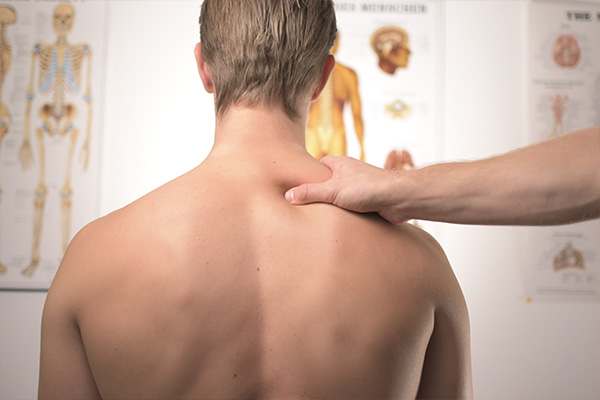
Trigger Point Therapy
Focused pressure to dissolve specific trigger points (which often feel like “knots”) on the body to help relieve muscle dysfunction.
Trigger point therapy is a bodywork technique that involves the applying of pressure to tender muscle tissue in order to relieve pain and dysfunction in other parts of the body. Sometimes massage and trigger point therapy are performed together.
Trigger point therapy is also called myofascial trigger point therapy. It was developed by Dr. Janet Travel in the United States in the 1940s.
What are Trigger Points?
Trigger points are areas of tenderness in a muscle. There are two basic types of trigger points: active and latent.
Active trigger points cause muscular pain and will refer pain and tenderness to another area of the body when pressure is applied. Latent trigger points only exhibit pain when compressed, they do not refer pain to other areas of the body. Latent trigger points are believed to be one of the causes of stiff joints and restricted range of motion of old age.
Trigger points may be associated with myofascial pain syndromes or fibromyalgia.
Trigger points are very common. They are also referred to as muscle knots.
Trigger points differ from acupressure points. Acupressure points are concentrations of energy or blockages of the body’s energy pathways. Trigger points are physical phenomena that can be felt by touch.
The pain caused by trigger points may be the biggest cause of disability and loss of time in the workplace.
What Causes Trigger Points?
Trigger points have several causes. Some common causes of trigger points are: birth trauma, an injury sustained in a fall or accident, poor posture, or overexertion.
What is the Purpose of Trigger Point Therapy?
The purpose of trigger point therapy is to eliminate pain and to re-educate the muscles into pain-free habits. After several treatments, the swelling and stiffness of neuromuscular pain is reduced, range of motion is increased, tension is relieved, and circulation, flexibility and coordination are improved.
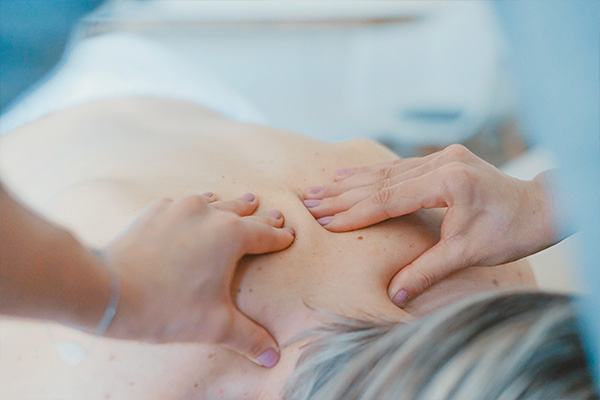
Swedish Massage
A combination of long, gliding strokes, kneading, tapping and stretching to relax and increase blood flow to the muscles.
The term “Swedish Massage” refers to a variety of techniques specifically designed to relax muscles by applying pressure to them against deeper muscles and bones, and rubbing in the same direction as the flow of blood returning to the heart.
What is the purpose of Swedish Massage?
The main purpose of Swedish massage is to increase the oxygen flow in the blood and release toxins from the muscles. Swedish massage shortens recovery time from muscular strain by flushing the tissues of lactic acid, uric acid, and other metabolic wastes. It increases circulation without increasing heart load. It stretches the ligaments and tendons keeping them supple and pliable. Swedish Massage also stimulates the skin and nervous system and soothes the nerves themselves at the same time. It reduces stress, both emotional and physical, and is suggested in a regular program for stress management. It also has many specific medical uses.
Swedish Massage Techniques?
Long strokes, kneading, friction, tapping, percussion, vibration, effleurage, and shaking motions. The usually sequence of techniques are:
• Effleurage: Gliding strokes with the palms, thumbs and/or fingertips
• Petrissage: Kneading movements with the hands, thumbs and/or fingers
• Friction: Circular pressures with the palms of hands, thumbs and/or fingers
• Vibration: Oscillatory movements that shake or vibrate the body
• Percussion: Brisk hacking or tapping
• Passive and active movements: Bending and stretching
Benefits of Swedish Massage?
Swedish massage feels good, is relaxing and invigorating. It affects the nerves, muscles, glands, and circulation, while promoting health and well being.
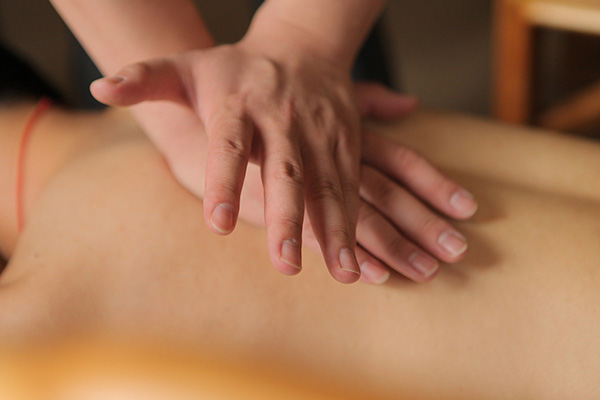
Myofascial Release
A light, sustained pressure applied to the skin in order to elicit elongation and release of constrictions in the body’s fascia, or connective tissue.
Myofascial Release is a very effective hands-on technique that provides sustained pressure into myofascial restrictions to eliminate pain and restore motion. The theory of Myofascial Release requires an understanding of the fascial system (or connective tissue). The fascia is a specialized system of the body that has an appearance similar to a spider’s web or a sweater.
Fascia is very densely woven, covering and interpenetrating every muscle, bone, nerve, artery and vein as well as all of our internal organs including the heart, lungs, brain and spinal cord. The most interesting aspect of the fascial system is that it is not just a system of separate coverings. It is actually one structure that exists from head to foot without interruption. In this way you can begin to see that each part of the entire body is connected to every other part by the fascia, like the yarn in a sweater.
Fascia also plays an important role in the support of our bodies, since it surrounds and attaches to all structures. These structures would not be able to provide the stability without the constant pull of the fascial system. In fact, our bones can be thought of as tent poles, which cannot support the structure without the constant support of the guide wires (or fascia) to keep an adequate amount of tension to allow the tent (or body) to remain upright with proper equilibrium.
In the normal healthy state, the fascia is relaxed and wavy in configuration. It has the ability to stretch and move without restriction. When we experience physical trauma, scarring, or inflammation, however, the fascia loses its pliability. It becomes tight, restricted and a source of tension to the rest of the body. Trauma, such as a fall, whiplash, surgery or just habitual poor posture over time and repetitive stress injuries has a cumulative effects. The changes they cause in the fascial system influence comfort and the functioning of our body. The fascia can exert excessive pressure producing pain or restriction of motion. They affect our flexibility and stability, and are a determining factor in our ability to withstand stress and strain.
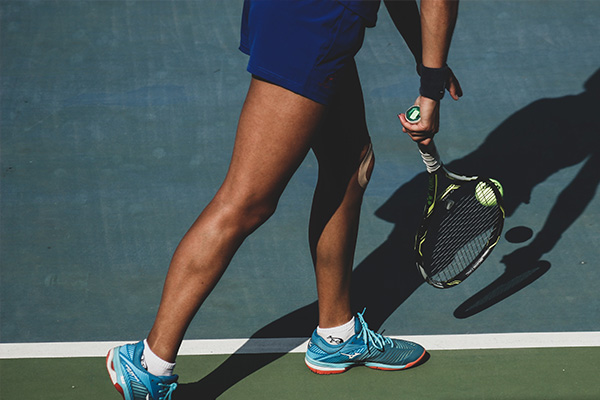
Orthopedic Massage
Combines the use of medical and sports massage to help relieve soft tissue pain and help aid in healing specific injuries.
Orthopedic massage therapy is a form of massage that combines techniques of several different massage techniques—including both medical and sports forms. Orthopedic massage is used on a patient when they have soft tissue pain or have injuries in order to help relieve the pain during injury, as well as to promote faster healing.
Orthopedic massage has three main elements, regardless of the injury or medical treatment involved: assessing the injury, matching the treatment to the injury, and adapting of the treatment as necessary.
The above three points are very important in orthopedic massage because, unlike many forms of massage therapy, the most emphasis related to this form of massage is placed on understanding the injury as well as what it will take to heal that injury. While orthopedic massage therapy is generally used to help heal soft-tissue injuries, many athletes and dancers receive orthopedic massages regularly to enhance performance.
What are the benefits of orthopedic massage?
Orthopedic massage has many benefits to offer patients, including the following:
• Increased blood circulation—this can help to heal an injury.
• Decreased pain—the massage itself, as well as the side effects caused by the massage, can help to relieve pain.
• Relaxation—not only can this reduce pain in the injured area, but it can also help to promote healing by relaxing the muscles near the injured area
• Realigns tissues—this can help relieve pain, promote healing in injuries, as well as prevent injuries.
• Reduces tension—this is a great benefit whether it is preventative or used as a pain relief (such as for sprains, etc.).
• Enhanced performance—orthopedic massage is used by many athletes regularly to enhance their performance (the relaxation, tension relief, and realignment help to accomplish this).
• Releases adhesions—this is the scar tissue that can form because of an injury (this often occurs in tendons, ligaments, etc.) and can sort of glue itself to nearby muscles or other tissues. When this happens, any movement can cause the tissue to tear again and cause pain.
• Strengthening—this can be helpful with enhancing performance, but it is most helpful to patients who have had an injury and have been unable to use certain muscles in their body due to the injury. When this happens, the muscle will begin to deteriorate over time and orthopedic massage can help strengthen those muscles again.
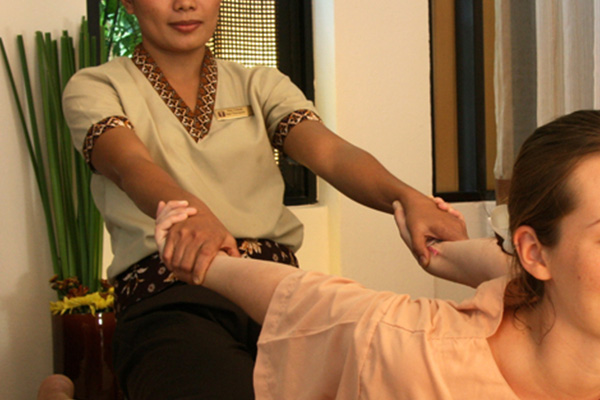
Thai Massage
Manipulates the body into yoga-like positions to elicit passive stretching, while stimulating chi lines through pressure points.
Thai massage is believed to have been developed by Jivaka Kumar Bhaccha, physician to Buddha, more than 2,500 years ago in India. It made its way to Thailand, where the Ayurvedic techniques and principles gradually became influenced by traditional Chinese medicine. For centuries, Thai massage was performed by monks as one component of Thai medicine.
What does Thai massage feel like?
Thai massage is more energizing and rigorous than more classic forms of massage. In Traditional Thai massage, the client remains fully clothed and is worked on a floor mat. Thai massage is also called Thai yoga massage, because the therapist uses his or her hands, knees, legs, and feet to move you into a series of yoga-like stretches. Many people say Thai massage is like doing yoga without any work. Muscle compression, joint mobilization, and acupressure are also used during treatment.
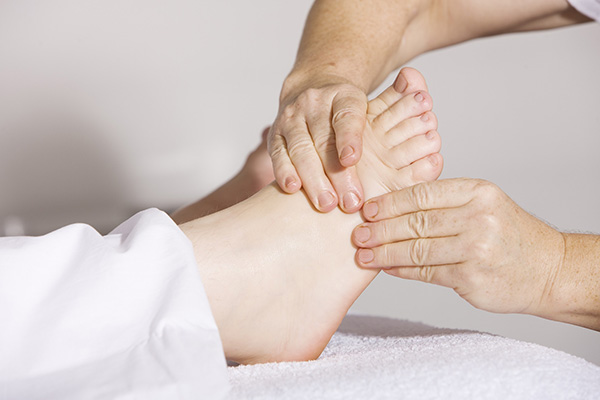
Cross-Fiber Friction
A deep friction stroke used to make scar tissue more pliable and break up adhesions on tendons and ligaments.
Developed for the treatment of soft tissue lesions by the British osteopath, Dr. James Cyriax, deep transverse friction effectively reduces fibrosis and encourages the formation of strong, pliable scar tissue at the site of healing injuries. This technique reduces the crystalline roughness that forms between tendons and their sheaths that can result in painful tendonitis. It can also prevent or soften myofascial adhesions.
A deep, non-gliding friction stroke, cross-fiber friction is administered with a braced finger or thumb moving across the grain of a muscle, tendon or ligament. The stroke must be applied directly at the site of the lesion, at right angles to the fibers, and be broad enough to separate the fibers without bouncing over them. The treatment is painful, though always within tolerance, and should be initiated only with the informed consent of the client. It should never be applied during the initial inflammatory stage in an acute injury. Following a session, any resulting soreness should fade within 24-48 hours.
What is the Purpose of Cross-Fiber Friction?
• To reduce muscle restriction by releasing tension at the attachment site
• Aids in healing of tendonitis and plantar fasciitis
• Increases mobility in joints
• Breaks up scar tissue
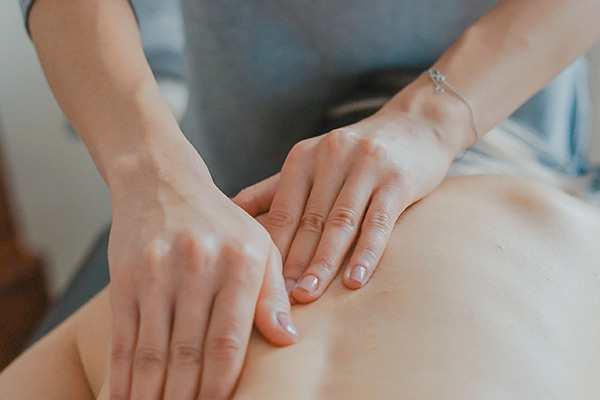
Reciprocal Inhibition
A technique used to activate a muscle in order to force the relaxation of the opposing muscle in dysfunction.
Originally used by osteopaths, athletic trainers, physical therapists, kinesiologists and physiotherapists, reciprocal inhibition is a simply learned stretching technique capable of amplifying the benefits of massage therapy treatment. Reciprocal inhibition provides for optimum joint function and longevity. Commonly used in sports massage, reciprocal inhibition is the application of resisted tension to the opposing muscle group.
Reciprocal inhibition, also known as Muscle Energy Technique (MET) is defined as a muscle’s automatic relaxation response to accommodate the contraction of its opposing muscle. Our muscles primarily operate in pairs; when one contracts (the agonist) its partner (the antagonist) relaxes. The body naturally orchestrates this mechanism during activities like running, where muscles opposing each other are engaged and disengaged sequentially to produce coordinated movement. This alternation of contraction facilitates movement ease and safeguards against injury. Classic examples of opposing muscle group partnerships include the biceps and triceps, as well as the hamstrings and quadriceps.
If a muscle becomes engaged for a prolonged period, such as a cramp, spasm or chronic tension, the opposite muscle becomes correspondingly inhibited. This response to dysfunction inhibits normal joint performance, which can result in deterioration of muscle, tendon and joint tissues. Performing reciprocal inhibition techniques on the contracted muscle’s pair will allow the cramped muscle to relax and can offer almost immediate relief to the client.

Prenatal Massage
A swedish style massage specifically designed for pregnant women to help relieve muscle aches and joint pain.
Massage during pregnancy differs from a regular massage in a few ways. One way has to do with how the pregnant woman lays on the table. Positioning during a massage is critical to the safety and well being of both the mother and the baby she is carrying. Another way has to do with avoidance of certain pressure points and areas around the body that may be harmful to the pregnancy.
The massage table will be set up so you will lie in a semi-reclining position. This is not only really comfortable, but safe for baby. Also you will turn from side to side to do your back and hips, there are body pillows, wedge pillows and extra padding to make you comfortable.
Trained prenatal or pregnancy massage therapists are aware of pressure points on the ankles and wrists that can gently stimulate pelvic muscles, including the uterus. Certified prenatal massage therapists are trained to avoid very specific and intentional pressure to these areas during pregnancy. Any woman who has experienced pre-term contractions or consistent Braxton-Hicks contractions should alert her therapist to that fact so that pressure points can be avoided completely.
What are the benefits of pre-natal massage?
Many studies have indicated that massage therapy performed during pregnancy can reduce anxiety, decrease symptoms of depression, relieve muscle aches and joint pains, and improve labor outcomes and newborn health.
Hormone Regulation: Studies done in the past 10 years have shown that hormone levels associated with relaxation and stress are significantly altered, leading to mood regulation and improved cardiovascular health, when massage therapy was introduced to women’s prenatal care. These changes in hormone levels also led to fewer complications during birth and fewer instances of newborn complications, such as low birth weight. The evidence points strongly to maternal and newborn health benefits when relaxing, therapeutic massage is incorporated into regular prenatal care.
Reduction of Swelling: Edema, or swelling of the joints during pregnancy, is often caused by reduced circulation and increased pressure on the major blood vessels by the heavy uterus. Massage helps to stimulate soft tissues to reduce collection of fluids in swollen joints, which also improves the removal of tissue waste, carried by the body’s lymph system.
Improvement of nerve pain: Sciatic nerve pain is experienced by many women in late pregnancy as the uterus rests on muscles of the pelvic floor and lower back. The pressure of the uterus spreads tension to the muscles of the upper and lower leg, causing them to swell and put pressure on nearby nerves. Massage therapy addresses the inflamed nerves by helping to release the tension on nearby muscles. Many women have experienced significant reduction in sciatic nerve pain during pregnancy through regular massage.
Other potential benefits of prenatal massage:
Reduced back pain
Reduced joint pain
Improved circulation and reduction of swelling
Reduced muscle tension and headaches
Reduced stress and anxiety
Improved oxygenation of soft tissues and muscles
Better sleep
Relief from muscle cramps, spasms, and myofascial pain, especially in the lower back, neck, hips, and legs.
Reduces stress on weight-bearing joints.
Improves outcome of labor and eases labor pain.
Enhances the pliability of skin and underlying tissues.
Provides support for the new mother with physical and emotional strains of mothering.
Is pre-natal massage safe throughout the entire pregnancy?
Yes, it is! Women can begin massage therapy at any point in their pregnancy – during the first, second, or third trimester. No matter where you are in the childbearing year, massage may have many benefits for you and your baby.



